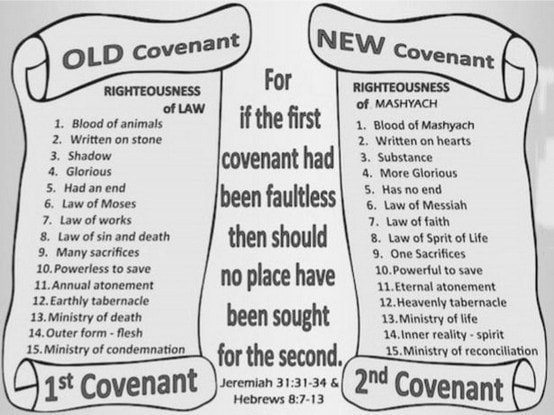By a stroke of luck, an intriguing question arises: Do any of the original books of the Bible still exist today?
While the exact manuscripts penned by the biblical authors have not survived the test of time, the journey of preservation and discovery surrounding the ancient texts offers an enthralling insight into the origins and transmission of these revered writings.
The exploration of this topic sheds light on the intricate tapestry of history, faith, and scholarship intertwined within the pages of the Bible, prompting a closer look at the enthralling narrative of textual preservation and interpretation.
Historical Background of Bible Manuscripts
Exploring the historical background of Bible scrolls reveals the challenges inherent in preserving the original texts due to the perishable nature of ancient writing materials and the manual process of copying. The Ancient Scripture, a significant part of the Bible, was originally recorded on materials like papyrus and parchment that haven't survived the test of time. This has led to the absence of the original scrolls of the Bible today. The manual process of copying manuscripts by hand, undertaken by ancient scribes, further compounded the preservation challenges. Each copy made was subject to wear and tear, increasing the likelihood of discrepancies and errors creeping into subsequent versions.
The Dead Sea Scrolls, dating between 250 BCE and 100 CE, provide some of the oldest existing copies of Hebrew Bible scrolls. These manuscripts have been pivotal in understanding the historical context and textual variations that have occurred over time. However, the loss of original scrolls wasn't solely due to natural degradation. Hebrew scribes, in an attempt to prevent defilement of the sacred texts, often destroyed or buried older copies. This practice, while well-intentioned, inadvertently contributed to the disappearance of the original texts and posed additional challenges in preserving the Bible's authentic content.
Preservation Challenges Over Centuries
Throughout centuries, the preservation of original Biblical manuscripts has faced significant challenges due to historical adversities and intentional actions aimed at safeguarding the sacred texts. Hebrew scribes played a vital role in the preservation of Scriptures; however, they also posed challenges by destroying old copies to prevent corruption by unbelievers. Additionally, the Nation of Israel's tumultuous history, marked by exiles, deportations, and dispersion, created obstacles in protecting manuscripts, impacting the preservation of original texts over time.
| Challenges Faced in Preservation of Original Manuscripts | Impact on Manuscript Protection |
|---|---|
| Destruction of old copies by Hebrew scribes | Hindered preservation efforts |
| Difficulties faced by the Nation of Israel | Challenges in protecting manuscripts |
| Various historical events influencing protection | Adversely affecting preservation |
| Nation's history of destruction and dispersion | Impeding manuscript protection |
Discoveries of Ancient Biblical Texts
Discovering ancient Biblical texts has greatly enriched our understanding of the historical and textual foundations of the Scriptures. The Dead Sea Scrolls, dating from the 5th century BC to the 1st century AD, are a notable discovery containing nearly every book of the Old Covenant with remarkable textual fidelity, shedding light on the ancient texts. The Ancient Cairo Geniza, which has preserved Old Covenant books from the 1st century AD, offers valuable insights into early biblical texts and their transmission.
Additionally, manuscripts like the Codex Cairensis (895 AD), Aleppo Codex (930s), and the Leningrad Codex (over 1,000 years old) have contributed significantly to our understanding of ancient biblical texts by providing versions of the Scriptures from different time periods. The Septuagint, a Greek translation of the Old Covenant from the 2nd century BC, closely aligns with the Old Covenant text from over 2,200 years ago, giving scholars a valuable reference point for studying the biblical text's evolution over time.
In addition, the New Covenant's textual evidence is extensive, with over 5,000 Greek manuscripts available for study. Early church leaders also quoted New Covenant writings in their works, further solidifying the authenticity and continuity of the biblical texts throughout history. These discoveries of ancient biblical texts provide a rich tapestry of evidence for scholars to analyze and understand the development of the Scriptures.
Significance of Extant Original Bible Books
Why are the extant original Bible books significant for understanding the history and authenticity of the Scriptures?
The significance of the extant original Bible books lies in their ability to provide valuable insights into the authenticity and preservation of the ancient texts. Here are four key reasons why these extant original Bible books are vital:
- Preservation of the Original Text: The extant Old Covenant books, such as those found in the Dead Sea Scrolls, offer scholars a glimpse into the early form of the Hebrew Bible. These manuscripts, dating back to between 250 BCE and 100 CE, provide a high level of textual fidelity, aiding in understanding the original text of the Scriptures.
- Insights into the History of the Bible: By studying the extant Old Covenant books, researchers can gain a deeper understanding of the development and history of the Bible. These ancient manuscripts shed light on how the biblical texts were transmitted and preserved over time.
- Confirmation by Jesus: Jesus' confirmation of the 39 books of the Old Covenant in the New Covenant book of Luke adds weight to the significance of these extant original Bible books. It reinforces the value of these texts in understanding the Scriptures.
- Support for Authenticity: The discovery of these ancient manuscripts, including nearly every book of the Old Covenant, supports the authenticity of the Bible. It demonstrates the care taken in preserving the original texts over centuries.
Implications for Biblical Scholarship
Quantifying the impact on Biblical scholarship, the absence of the original books of the Bible necessitates a meticulous reliance on early copies and manuscripts for reconstructing the authentic texts. In the first century, the original composition of the Biblical texts took place, with the prophetic writings and teachings being documented by various authors. However, as time passed, the original manuscripts were subject to decay and loss. By the second century, copies of these original texts were being made and circulated among early Christian communities. The early church fathers played an important role in preserving and disseminating these texts, ensuring the continuity of the Biblical message.
| Implications for Biblical Scholarship | ||
|---|---|---|
| Challenges | Opportunities | Strategies |
| Relying on copies and manuscripts | Preservation of Biblical content | Textual criticism for accuracy |
| Absence of autographs | Study of ancient manuscripts | Comparison of different versions |
| Maintaining integrity of texts | Confirmation of enduring message | Collaboration among scholars |
Through the meticulous study of ancient manuscripts and the application of textual criticism, Biblical scholars continue to unravel the mysteries of the Bible, ensuring that the essence and teachings of the original compositions remain intact for ongoing Bible study and advancements in biblical scholarship in the modern world.

